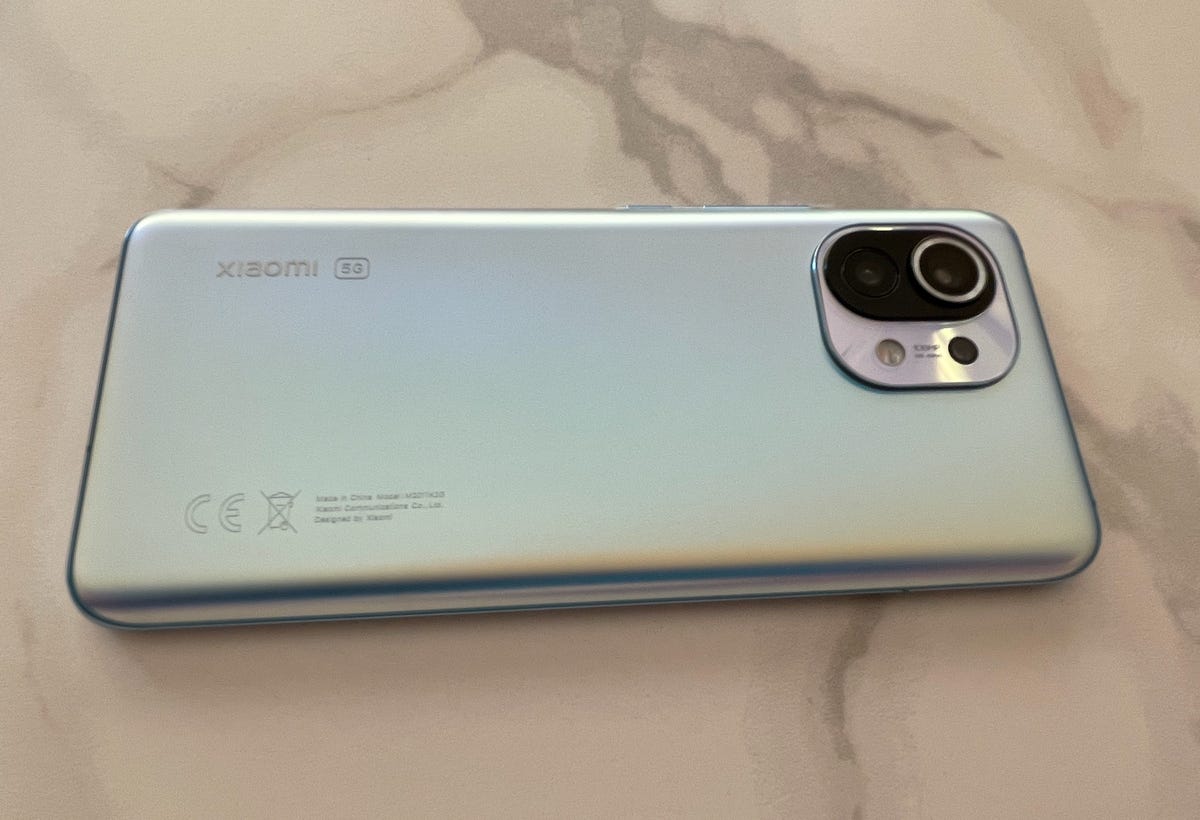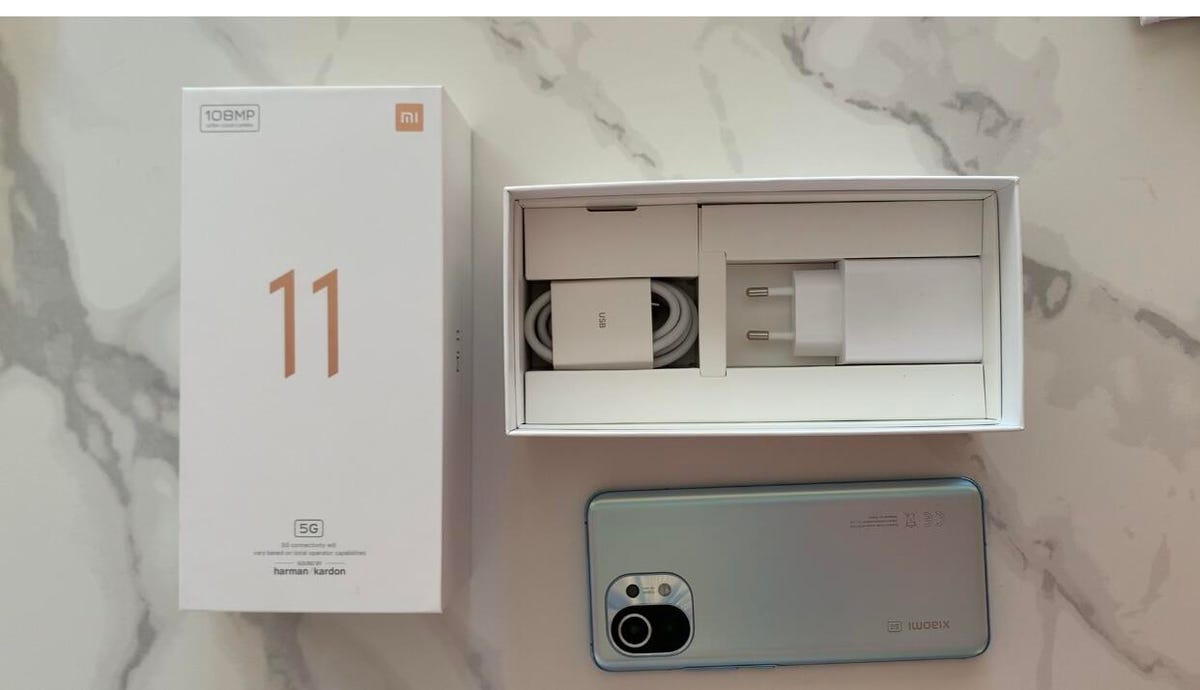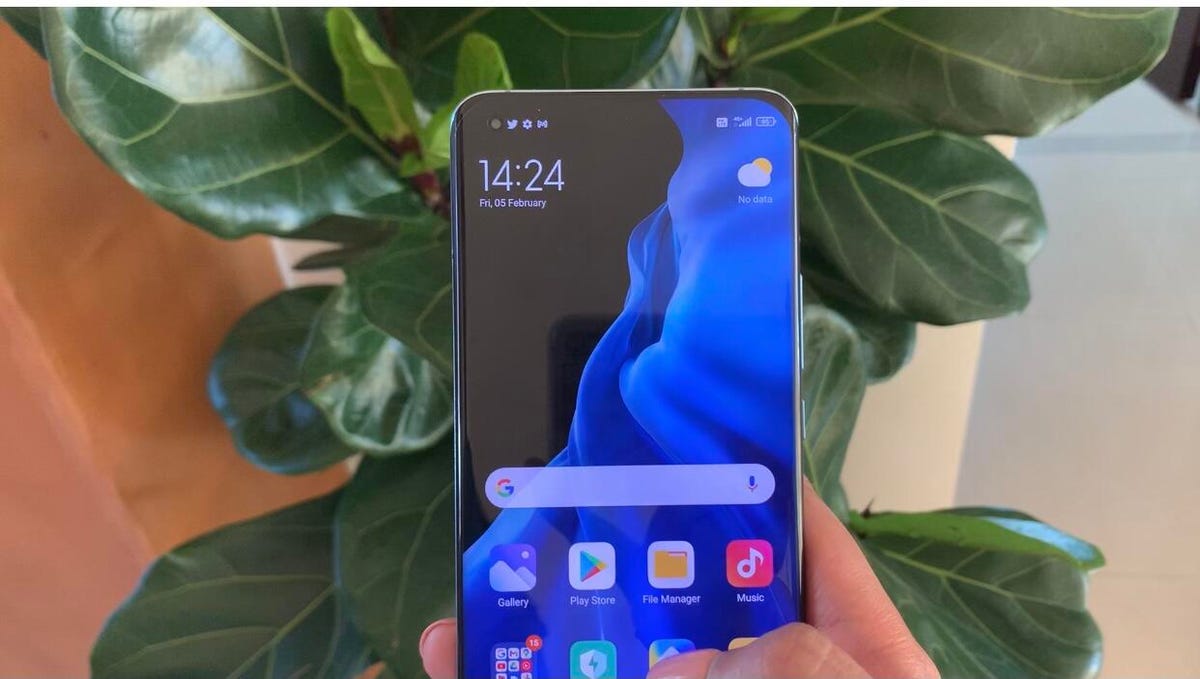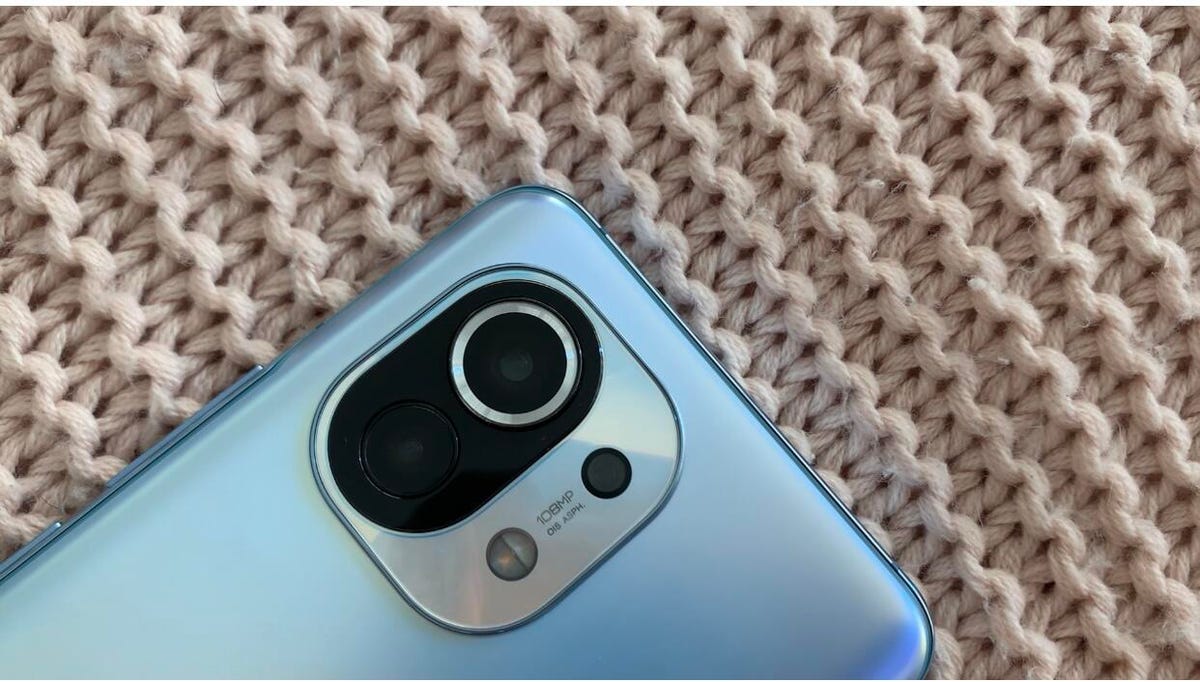Mi 11 review xiaomi s latest tour de force rivals samsung s20 mi 11 review xiaomi s latest tour de force rivals samsung account mi 11 review xiaomi s latest tourism mi 11 review xiaomi s latest tourist mi 11 review xiaomi note mi 11 review xiaomi 12 mi 11 ultra review mi 11 lite review xiaomi mi 11 ultra xiaomi mi 11 lite 5g ne

Mi 11 review: Xiaomi's latest tour de force rivals Samsung's Galaxy S21
The Mi 11 is Xiaomi's inaugural global flagship for this year. Launched in February, it's advertised as a phone for a "new generation of movie lovers," whatever that means. The Mi 11 has a 6.5-inch OLED display, and houses Qualcomm's latest Snapdragon 888 chipset, and with a 120 Hz display that features a peak brightness of 1,500 nits. It might just be the brightest phone available.
I spent a week or so testing the Mi 11 and can say it delivers a solid Android experience packed in a sleek device with premium build quality. From the bright display, long-lasting battery life, dependable cameras and zippy processor to its exceptional speaker system, the Mi 11 is Xiaomi's latest tour de force.
Like
- Crisp and bright display
- Loud speakers
- Fast processor
- Dependable cameras
Don't Like
- Not easily available in the US
- No telephoto lens
But the Mi 11 doesn't have everything, Xiaomi made some thoughtful trade-offs to keep a lid on price. For instance, an IP rating for water- and dust-resistance is missing once again, although the device is splash-proof, according to Xiaomi. There's also no telephoto lens in the Mi 11's rear camera module, meaning it lacks optical zoom and relies on digital zoom.
Even with those compromises, the Mi 11's potent combination of features, performance, and price make it an easy phone to recommend, as well as a serious contender to Samsung's popular and prestigious Galaxy S21 and S21 Plus devices. The Mi 11 starts at 749 euros for the 8GB/128GB model (converts to roughly $900, £650, AU$1,170) and 799 euros (approximately $965, £700, AU$1,250) for the 8GB/256GB model. This is the international version of a phone released in China a couple of months ago, where it fetched 3,999 yuan. Xiaomi hasn't revealed a release date yet for overseas markets, but I'll update this review once that information is available, so be sure to check back here.
Xiaomi says it has no current plans to bring the Mi 11 stateside, (and this is unlikely to change any time soon considering its ongoing legal tussle with the US government). You'll be able to buy this phone in the United States eventually, however, through online retailers such as Amazon and eBay.
As of this writing, Xiaomi revealed only a single device as part of the Mi 11 series, but I expect at least one more model in the form of the Mi 11 Ultra based on recent leaks and the company's past launches. Last year, Xiaomi debuted the Mi 10, Mi 10 Pro and Mi 10 Ultra.

Xiaomi's Mi 11
Sareena Dayaram/CNETPlenty of bundled accessories
When Xiaomi launched the Mi 11 in China, it followed Apple and Samsung's example and didn't include a wall adapter. It's putting its best foot forward for international markets, though, and this global version comes with a 55-watt wired charger, a USB-C adapter and one case, though the media kit I received contained two.
Take that, Apple (and Samsung).

Xiaomi's Mi 11 comes with a 55W charger.
Sareena Dayaram/CNETXiaomi also took an opportunity to make what I think is a thinly veiled jab against Huawei, which was famously banned from using Google apps including Gmail and Google following US sanctions levelled by the Trump administration. On the side panel of the box, you'll see, "with easy access to the Google apps you use most" inscribed.

The Mi 11 features a 120Hz display.
What Xiaomi changed in the Mi 11
The Mi is Xiaomi's main flagship line, as opposed to its budget Redmi and Poco sub-brands. Last year's phone, the Mi 10, also served up many top-shelf specs like a smooth display and fast charging, but here's what the Mi 11 changes.
- Three cameras on the rear --- as opposed to four in the Mi 10 -- and a reshuffled rear camera module.
- Bumped up wireless charging support to 50W compared to 30W in the Mi 10 line.
- Improved display: Higher resolution and speedier refresh rate.
- Co-developed speaker system with Harmon and Kardon.
- Faster processor.
- Lighter than the Mi 10.
For more details on what Xiaomi changed, scroll down to CNET's specs chart below.
The Mi 11's design
I was given a sleek icy blue device for review, and I adore the shimmery finish, especially in the sunlight. The device feels comfortable to hold with its four curved edges, and Gorilla Glass Victus (seen on the Galaxy S21 Plus and Ultra) on the front and back protect it from drops. Although the Mi 11 is virtually indistinguishable from the Mi 10 on the front, on the back a redesigned "squircle camera" bump houses the three rear cameras and a flashlight. The Mi 11 is also lighter than its predecessor, but still it's a phone that's easier to use with two hands.
The Mi 11's 3 rear cameras
The Mi 11 boasts a revamped camera bump, taking the form of a "squircle" and a reshuffled camera array consisting of three rear lenses: a 108-megapixel wide-angle camera, a 13-megapixel ultrawide-angle camera and a 5-megapixel telemacro lens, which is the equivalent of a 55mm lens. Xiaomi ditched the macro and depth lenses seen in the Mi 10 in favor of what Xiaomi calls a "telemacro" lens in the Mi 11. Keep in mind that that absence of a telephoto lens in the Mi 11 means all zoom is digital.
Flip the phone around, and you'll see a barely there notch on the upper left of the display that houses a 20-megapixel selfie camera. Take a look at the pictures below to see the cameras in action.

The Mi 11's ultrawide-angle camera with a 123-degree field of view is useful for taking landscape photos.
Sareena Dayaram/CNET
Taken in bright lighting conditions using the main camera.
Sareena Dayaram/CNET
This was taken indoors, with sunlight pouring in through the windows.
Sareena Dayaram/CNET
Taken with the ultrawide camera. Scroll down to see the level of detail the macro lens captures.
Sareena Dayaram/CNET
Taken on default settings.
Screenshot by Sareena Dayaram/CNET
Taken using the telemacro lens on Super Macro mode.
Sareena Dayaram/CNET
Example of 30x zoom.
Sareena Dayaram/CNET
Taken with the Mi 11's 20-megapixel front-facing camera.
Sareena Dayaram/CNETThe Mi 11 runs on Snapdragon 888
The Mi 11 carries Qualcomm's latest Snapdragon 888 chipset backed by 8GB RAM and 128GB or 256 GB of storage, making it a bona fide powerhouse. You probably won't notice an immediate difference from a Snapdragon 865 processor, which is already blazing fast, but Qualcomm promises 25% to 35% better processing and graphics card performance with the 888.

The Mi 11's 108-megapixel main camera comes with an ultrawide and "telemacro" lens.
Sareena Dayaram/CNETThe Mi 11's flagship-level display and solid batteries
The Mi 11 boasts a stunning waterfall screen complete with an 6.81-inch OLED panel that's bright and clear whatever the lighting conditions. In addition, the Mi 11 has wide quad HD plus resolution (3,200x1,440 pixels) and 120Hz refresh rates, which can be used together or dialed back a notch if you're trying to preserve battery life. Most phones have refresh rates of 60Hz, which means the screen refreshes 60 times in a second. 120Hz displays can look a lot smoother when scrolling through webpages by comparison. There's also an in-screen fingerprint reader, which Xiaomi says doubles up as a heart-rate sensor.
The battery lasted me about a day and half with mild use. That means I made a few calls, sent some emails, watched a couple of YouTube videos and browsed the internet. Even when you eventually run out of juice, refilling the Mi 11's 4,600-mAh battery is relatively quick work, thanks in part to that 55-watt wired charger I mentioned earlier. Based on my tests, 15 to 20 minutes of time was sufficient to recharge the battery by 50% to 60%. Within 50 minutes, the battery had been completely revitalized. Safe to say that battery anxiety will be a thing of the past when you're using the Mi 11. Keep in mind, the Mi 11 also supports 50 watts of wireless and reverse-wireless charging.
Mi 11's loud and crisp speakers
One of the features that stood out in last year's Mi 10 Pro was a pleasantly loud and crisp speaker system complete with one speaker on each end of the phones. This year Xiaomi says it has levelled up its speaker game by refining its audio experience together with Harman Kardon, a decades-old audio equipment manufacturing company. I'm no audiophile, but I was impressed by the audio quality on the Mi 11 even if it isn't the loudest set of mobile speakers out there. Still, the speakers were loud enough, and audio remained crisp even when I cranked the volume all the way up. Plus it has a tight bass to boot.
Mi 10 vs. Mi 10 Pro vs. Mi 11
| | Mi 10 | Mi 10 Pro | Xiaomi Mi 11 |
|---|---|---|---|
| Display size, resolution | 6.67-inch AMOLED, 2,340x1,080 pixels (Full HD) | 6.67-inch AMOLED; 2,340x1,080 pixels (Full HD) | 6.81-inch AMOLED 3,200x1,440 pixels (WQHD plus) |
| Pixel density | 386ppi | 386ppi | 515ppi |
| Dimensions (Inches) | 6.4x3x0.35 in | 6.4x3x0.35 in | 6.4x2.9x0.32 in |
| Dimensions (Millimeters) | 162.58x74.80x8.96mm | 162.58x74.80x8.96mm | 164.3x74.6x8.06mm |
| Weight (Ounces, Grams) | 208 grams | 208 grams | 196 grams |
| Mobile software | Android 10 | Android 10 | Android 10 |
| Camera | 108-megapixel (primary), 13-megapixel (ultrawide), 2-megapixel (macro) , 2-megapixel (depth) | 108-megapixel (primary), 20MP (ultrawide), 12-megapixel (telephoto), 8-megapixel (telephoto) | 108-megapixel (wide), 13-megapixel (ultra-wide), 5-megapixel (telemacro) |
| Front-facing camera | 20-megapixel | 20-megapixel | 20-megapixel |
| Video capture | 8K | 8K | 8K |
| Processor | Snapdragon 865 | Snapdragon 865 | Snapdragon 888 |
| Storage | 256GB | 256GB | 128GB/256GB |
| RAM | 8GB | 8GB | 8GB |
| Expandable storage | None | None | None |
| Battery | 4,780 mAh (30W wired and wireless charging) | 4,500 mAh (50W wired, 30W wireless charging) | 4,600 mAh (55 wired, 50W wireless charging ) |
| Fingerprint sensor | In-screen | In-screen | In-screen |
| Connector | USB-C | USB-C | USB-C |
| Headphone jack | None | None | None |
| Special features | 30W wired and wireless charging, dual stereo speakers,5G enabled, reverse wireless charging | 50W wired, 30W wireless charging, dual stereo speakers ,5G enabled, reverse wireless charging, 90 Hz | 5G enabled, 120Hz display, dual stereo speakers, 55W wired charging, 50W wireless charging, 10W reverse wireless dual SIM |
| Price off-contract (USD) | starting at 799 euros, converts to $960 | starting at 999 euros, converts to about $1,200 (8GB RAM/256 GB) | starting at 749 euros, converts to $905, |
| Price (GBP) | £700 converted | £880 converted | £655 converted |
| Price (AUD) | AU$1,250 converted | AU$1,570 converted | AU$1,170 converted |
Source
Blog Archive
-
▼
2022
(122)
-
▼
November
(42)
- WatchOS 9 Could Help The Apple Watch Catch Up To F...
- How To Place, Install Carbon Monoxide Detectors In...
- 'Stranger Things' Clip Celebrates Halloween And Gh...
- Lamborghini's New Urus Performante Ups The SUV Ant...
- 5 Game Day Essentials: Make The Best Air Fryer Chi...
- Pixel 6 Pro Review: Google's Flagship Is Still A T...
- Garmin Lily Review: One Of The Best Smartwatches D...
- Hit The Ground Running With 50% Off The Garmin Ven...
- Buckle Up, 'Stranger Things' Season 4 Part 2 Strea...
- Best Cheap Projector For 2022
- Lenovo Yoga C940 Vs. Yoga C740: Which 2-in-1 Is Ri...
- Nvidia's New Data Center GPU Packs 20 Times The Pe...
- Wake-up Call: Are You Making These Five Ergonomics...
- Elon Musk Asked In Twitter Poll If He Should Sell ...
- Netflix Is Raising Prices Again By $1 To $2 For Ev...
- What States Can And Can't Do When Banning Abortion
- $201,000 Phone Bill Not A Mistake
- NHTSA Upgrades Tesla Autopilot Investigation, One ...
- How To Send Cash With Snapchat
- Surprising Tech And Gadgets You Can Get On Amazon ...
- Apple's IPod Touch Is Discontinued, Ending The Mus...
- Senators Urge Apple, Google To Stop App Data Colle...
- Netflix Will Launch An Exploding Kittens Game Next...
- Samsung's Galaxy Chromebook Has A 4K UHD AMOLED Di...
- Nvidia Quadro RTX 5000 Will Bring A New Level Of P...
- Say 'hello' To The DJI Mavic Pro 2 Drone -- If Thi...
- Biden To Call On Congress To Suspend Gas Tax
- Chromebooks Have An Expiration Date. Here's How To...
- Coffee Enthusiasts Can Save Big On Makers, Carafes...
- More People Need To Watch The Absolute Best Show O...
- Pokemon Go PokeStops Are Coming To Best Buy And Ga...
- 3 Netflix Parental Control Features Beyond The Kid...
- Samsung To Build $17 Billion Chip Factory In Texas
- The Book Of Boba Fett: Fans Fix Yet Another Star W...
- Elon Musk Mocks Twitter Legal Action Threat With M...
- 2022 Honda Civic Sedan Reviews, News, Pictures, An...
- These Technologies Could Play A Big Role In The IP...
- Rent Prices Continue To Surge, Alongside Mortgage ...
- 4 Ways To Clean Up The Rotting Smell In Your Garba...
- Trouble Tracking Your Stimulus Check Via Get My Pa...
- This Star Wars AT-AT Is Actually A Cosplaying Clyd...
- Mi 11 Review: Xiaomi's Latest Tour De Force Rivals...
-
▼
November
(42)
Total Pageviews
Search This Blog
Popular Posts
-
DJI's new $500 RC robot features a camera, 31 sensors and a mini cannon DJI's new $500 RC robot features a camera, 31 s...
-
How to begin a valedictorian speech, how to open a valedictorian speech, writing a valedictorian speech, valedictorian speech examples colle...
-
Best welcome speech quotes, best welcome speech for father s day, the best welcome speeches, best welcome speeches, best welcome mats, best ...
